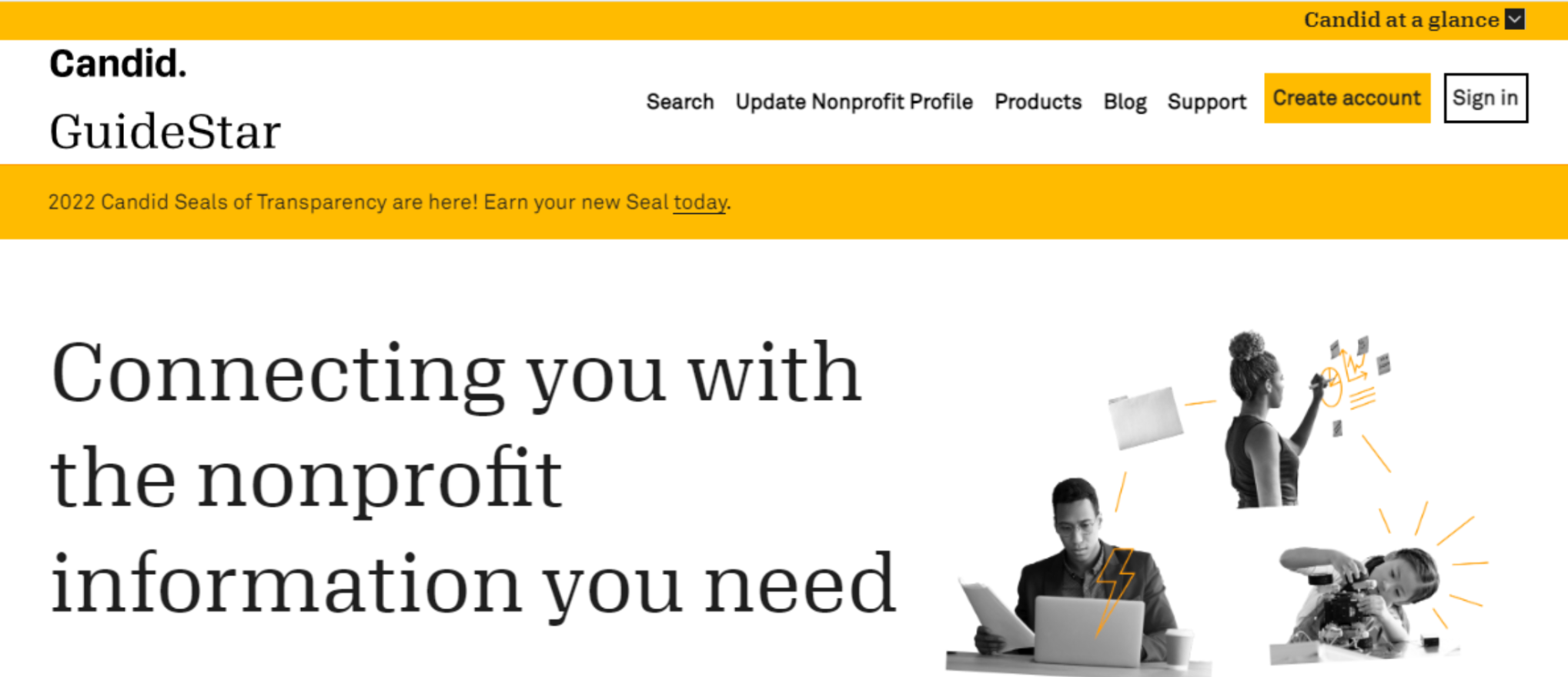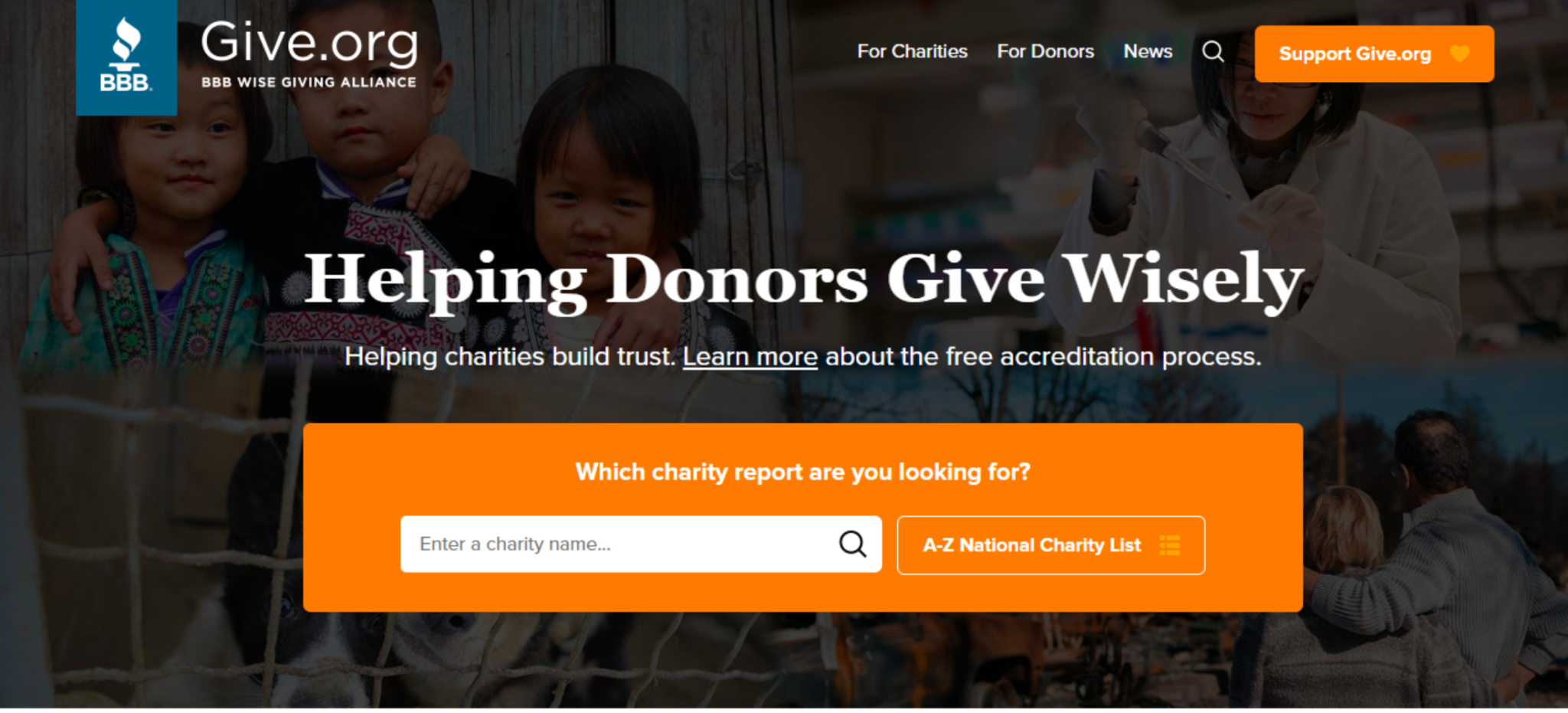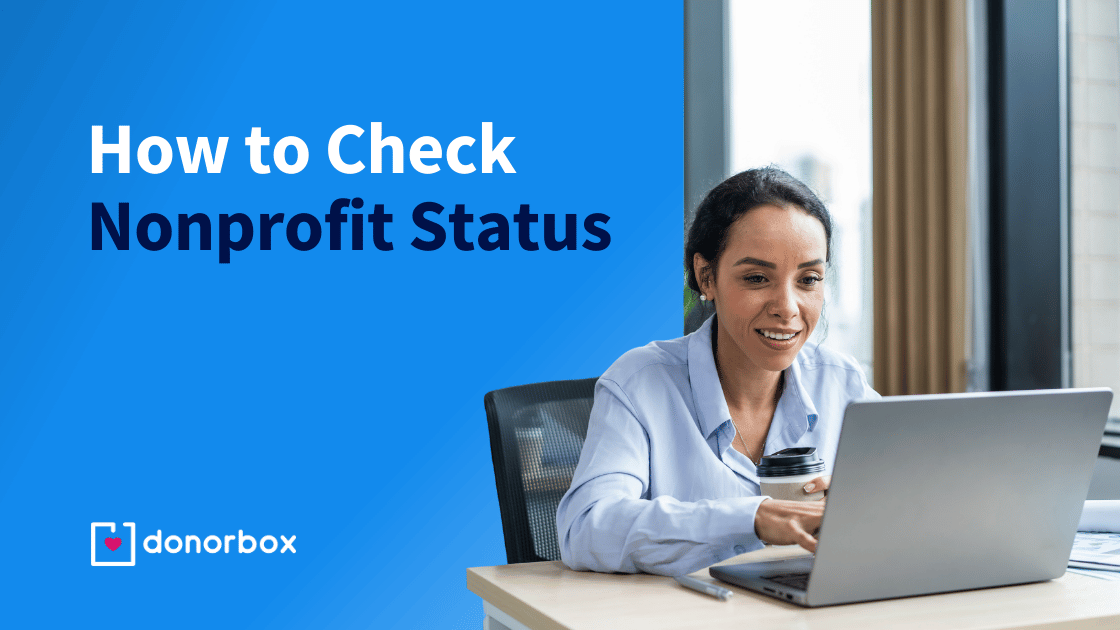An obvious reason why donors and foundations may want to check an organization’s nonprofit status is fear of fraud. But that’s not the only reason. And they aren’t the only people who check a nonprofit’s status.
If you’re a new nonprofit, waiting to start your mission, or a donor interested in learning more, you must check the nonprofit status before making crucial decisions.
Thankfully, there are several ways to do this. In this article, we’ll explore who needs to check the nonprofit status and the six best ways to do it.
Who Needs to Check the Nonprofit Status of an Organization?
How do you check if a nonprofit is legit? How long does it take to receive 501(c)(3) status? What are the types of nonprofits?
The answer to these questions, and others, require nonprofits and individuals to check a nonprofit’s status.
1. Nonprofits
Before applying for funding, new nonprofits must apply for tax-exempt status with the IRS. Most foundations and corporations don’t allow nonprofits to apply for funding without it.
Nonprofits apply for 501(c)(3) tax-exempt status after becoming a corporation with their state and receiving an Employer Identification Number (EIN).
You’ll want to apply for 501(c)(3) status as early as possible because it can take up to six months to receive your letter of determination by mail, and delays are possible.
You will likely get nervous waiting for this letter, but there are ways to view your status online. You can also do the same by phone, fax, or mail.
2. Potential donors
Individual donors regularly receive solicitations from nonprofits. Sometimes you’ll receive donation requests from organizations with no personal connection.
In these cases, it’s best to research the organization’s nonprofit status to ensure it is a legal nonprofit and your donations are tax-deductible before giving.
3. Foundations
Foundations have an even greater risk if they fund organizations that aren’t nonprofits. Since foundations typically fund specific activities or initiatives, it can look bad for a foundation if they support an illegitimate organization. This is why nonprofits require proof of 501(c)(3) tax status when applying for a grant.
6 Best Ways to Check Nonprofit Status
1. Ask the charity
As a donor or foundation, the first step to check a nonprofit’s status is to ask the charity. Nonprofits have this information and should be willing to share it.
Nonprofits should include their tax EIN on their website. Donors need this to apply for an annual tax deduction. Donors and Foundations can also ask for a copy of the nonprofit’s determination letter if there is concern about the organization’s status.
If a nonprofit is unwilling to give you this information, you should take this as a red flag!
2. Internal Revenue Service (IRS)
As a nonprofit, waiting for a response after applying for tax-exempt status can be stressful.
If you’re a smaller organization and filed Form 1023-EZ online, you should receive a response in less than a month. If you had to file Form 1023 or Form 1024, the process will take longer, and you may wait three to six months.
Nonprofits can still solicit funds without the letter of determination if they know they’re tax-exempt, so the IRS gives nonprofits a way to check that status.
You should receive a letter in around 21 days, saying the IRS received your application. But If you haven’t heard anything about your application’s status, reach out to the IRS by mail, phone, or fax.
You will be asked to provide the following information:
- Organization’s name
- EIN
- Application number
- Date of application
- Your title
Remember, nonprofits must not contact the IRS before they’ve posted the date it was sent to a specialist. It wastes your and the IRS’s time. In some cases, nonprofits can expedite the application process if there is a compelling reason. The IRS provides a few examples of this:
- A pending grant where its loss could cause the organization to close.
- A natural disaster where a new organization can provide relief.
- Undue IRS delays.
Donors and foundations can also use the IRS’s website to check a nonprofit’s status using the organization’s name or EIN.
3. GuideStar

If you’re a donor looking to check a nonprofit’s status, there are easier ways. GuideStar is an online platform where nonprofits create their profiles and receive seals of transparency based on their operations.
Anyone including individuals and foundations can use this tool to research nonprofits’ financial reports for the last five years. They have a specific search page where you can search organizations with their names or other keywords.
You also get to add filters to all nonprofit profiles on GuideStar to find out a list of nonprofits with a particular seal, subject area, affiliation type, diversity, and more.
To set up your organization’s GuideStar profile, check out this step-by-step guide.
4. Charity Navigator
Charity Navigator is another website anyone can use to check a nonprofit’s status.
This online platform rates nonprofits based on accountability and finance, impact and results, culture and community, and leadership and adaptability.
Nonprofits can use it to promote their organization and share details on their nonprofit’s history and mission, annual impact reports, leadership salaries, and how they respond to donor questions.
Their search page enables you to add filters such as cause, beacons, state, and others to find out a list of charities and check their statuses. You can also directly search with the organization’s name to find their details.
5. Better Business Bureau’s Wise Charity Alliance (BBB)

Better Business Bureau is a trustworthy resource people use to check for charity reports.
BBB has partnered with Give.org to help check the nonprofit status and financial details. BBB and Give.org accredit charities that meet their twenty standards.
They have two different landing pages on their website: for charities and for donors. This means both sides can use this website to check for nonprofit statuses. Nonprofit organizations and charities also use this platform to build trust through a free accreditation process.
6. Checking a church’s status
Churches, mosques, and synagogues in the United States are automatically tax-exempt. Since they don’t have to apply for this exemption, there isn’t an easy way to check if they are acting legally and ethically.
However, there are ways to monitor this yourself.
A church should always exist for religious purposes. It can pay its staff a reasonable salary but it cannot transfer property or give an excessive amount of money as salary to an insider.
Also, the church cannot be involved in political campaigns or activities. It also cannot encourage members to support or oppose a candidate.
Final Thoughts
Starting a new nonprofit can be stressful, and waiting for your organization’s tax-exempt status can delay your fundraising efforts. Thankfully, the IRS gives nonprofits options to check their status online.
For donors and foundations that want to make sure their money goes to a good cause, there are plenty of online platforms and other methods to ensure that a nonprofit meets specific standards.
As you can see, there’s a lot to starting and supporting nonprofits. That’s why Donorbox has developed multiple resource hubs including the Nonprofit Blog, Donorbox Library, The Nonprofit Podcast, and more to help nonprofit organizations.
Want to know more about Donorbox? It’s an all-in-one online fundraising platform helping nonprofits with simple and robust features to boost their donations and outreach. Sign up for free to get started – no contracts involved!






